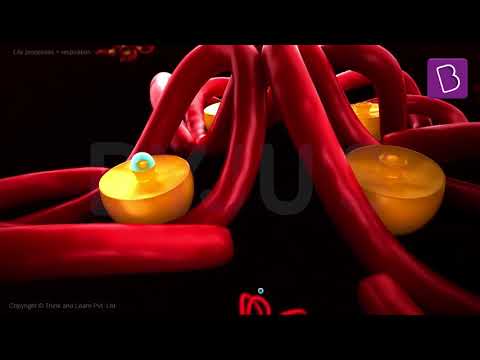Table of Contents
- What is Respiration?
- Transport of Oxygen during Respiration
- Transport of Carbon Dioxide during Respiration
What is Respiration?
Respiration is the process through which living organisms take in oxygen and give out carbon dioxide to release energy. So, naturally, respiration is a major and vital process of gas exchange. The transport of gases during respiration, both oxygen and carbon dioxide are carried out by the blood cells.

Transport of Oxygen during Respiration
During respiration, about 97% of oxygen is transported by red blood cells in the blood, and the remaining 3% gets dissolved in the plasma. Haemoglobin is a pigment present in the RBCs that gives blood its red colour. Oxygen binds with haemoglobin to form oxyhaemoglobin, which depends on the partial pressures of oxygen, carbon dioxide, H+ concentration and temperature. One haemoglobin molecule can carry up to 4 molecules of oxygen. The partial pressure of oxygen, H+ concentration and low temperature are the ideal conditions for the formation of oxyhaemoglobin. These conditions are met in the alveoli. But in the tissues, opposite conditions exist, and so oxygen is dissociated from the oxyhaemoglobin. Every 100mL of blood that gets oxygenated on the lung surface can deliver 5 mL of oxygen to the tissues on average.
Transport of Carbon Dioxide during Respiration
Around 20-25% of carbon dioxide is carried by haemoglobin as carbamino-haemoglobin. 7% is in a dissolved state in the plasma, and the remaining is carried as bicarbonate. Again, the binding of carbon dioxide with haemoglobin is related to the partial pressure of carbon dioxide and the partial pressure of oxygen. As mentioned earlier, the partial pressure of carbon dioxide is high in the tissues, and this is where more binding of carbon dioxide occurs. In the alveoli, where the partial pressure of oxygen is high, carbon dioxide gets dissociated from carbamino-haemoglobin. The enzyme carbonic anhydrase present in a high concentration in RBCs and in small quantities in the plasma facilitates this reaction in both directions. So, the bicarbonate formed in the tissues releases carbon dioxide at the alveoli. Every 100 mL of deoxygenated blood can deliver 4 mL of carbon dioxide to the alveoli.

To know more about the gas exchange and the Human respiratory system, visit BYJU’S.


Comments